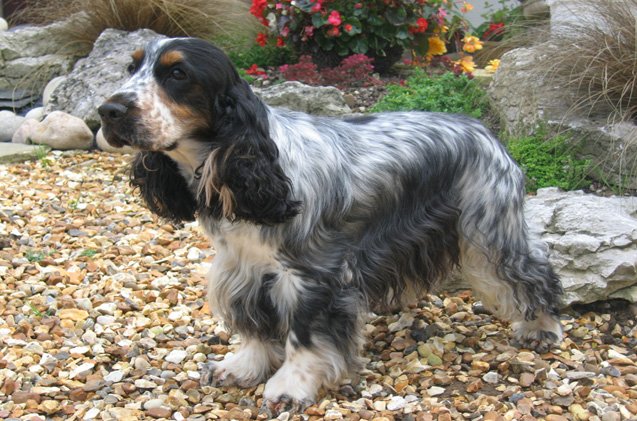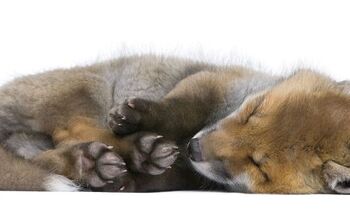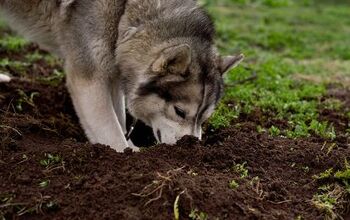Cocker Spaniel


About Cocker Spaniel
In the world of dogs there is perhaps no breed more associated with a specific name than the Cocker Spaniel. The name Cocker Spaniel rolls off the tongue and reflects the actual appearance of the Spaniel itself – a small, flowing, elegant animal that is well-balanced and has a general reputation for good behavior.
But what about the Cocker Spaniel makes it such a quintessential dog? Like many breeds, the Cocker Spaniel has a rich history updated into a modern appearance, but the Spaniel is not as old as even the Rottweiler. In this brief guide, we’ll take a look at the Cocker Spaniel and address how it became a breed synonymous with “quality dog.”
The Cocker Spaniel is small, flowing, and elegant, and has a general reputation for good behavior.
The mention of “Spanyells” goes back as far as the Middle Ages – the 14th century, to be exact. There’s a good chance these Spanyells weren’t exactly the Cocker Spaniels we know today, but this specific breed of dog has certainly enjoyed a rich history.
It’s assumed Spaniels first appeared in Spain during this time, but the first appearance of the phrase “Cocker Spaniel” didn’t originate until the 1800s, when a specific type of field spaniel began assuming the name. At the time, in England, the phrase Cocker Spaniel could also refer to a number of other spaniels such as the Norfolk and Sussex Spaniels, which today could be considered different breeds.
This general classification gave rise to a low standard of calling a dog a Cocker Spaniel: until around 1870, the only characteristic a dog named a “Cocker Spaniel” had to have was a weight of under 25 pounds. Needless to say, the standards have risen, but the story helps illustrate why the phrase “Cocker Spaniel” seems to associate itself with any manner of small dogs.
Pedigree
Cocker Spaniels were considered hounds hundreds of years ago, and as such were often used to assist with hunting, as many dogs at the time were. Since Cocker Spaniels helped hunt Woodcock, you find the name “Cocker.”
Cocker Spaniels have actually been pedigree to many other dogs as classifications have grown more sophisticated. The aforementioned Norfolk and Sussex Spaniels were initially considered Cocker Spaniels, as were Welsh Springer Spaniels, formerly known as Welsh Cocker Spaniels.
Today, there is a stark difference in the appearance of the American Cocker Spaniel and the English Cocker Spaniel. If you’re interested in learning more about Cocker Spaniels, it’s a good idea to view these animals as different breeds.
Small but active, Cocker Spaniels typically have a relatively fast metabolism and should be fed with that in mind. But it’s also important to keep in mind that these animals are small. Spaniels might try to feast on birds when left to its own devices, but you’ll find that meat mixed in with general dog food and vegetables can make for a very nutritious Spaniel meal.
Excitable but well-balanced, Cocker Spaniels are a well-behaved small dog that have a lot of energy.
Training a Cocker Spaniel is not a special challenge, although smaller dogs in general can be a little harder to control and be easy to distract, especially considering how difficult they can be to gather if they decide to dart off. A Cocker Spaniel is speedy and you’ll want to incorporate that into both your exercise and training – don’t be afraid to give your Cocker Spaniel a job that might work for a sporting dog. Cocker Spaniels, after all, are considered part of the sporting group, even if they are the group’s smallest member.
As mentioned, until around 1870 any dog less than 25 pounds was considered a Cocker Spaniel. These days, a Cocker Spaniel might not deviate too far from that, depending on the individual gender of the Cocker Spaniel. Cocker Spaniels should be light and ready to move. If your Cocker Spaniel is anything but quick at a relatively young age, it is probably overweight.
Excitable but well-balanced, Cocker Spaniels are a well-behaved small dog that have a lot of energy, particularly when they’re young. They’re friendly enough to be one of the most popular breeds of dog in America and can take very well to company, particularly if they’ve formed bonds with certain people. These Spaniels are not a toy dog and enjoy having something to do, so treat them as a sporting dog even if you keep them groomed like a toy breed.
Health Problems
Unfortunately, Cocker Spaniels can be susceptible to a number of health problems, and this isn’t always good news for owners who want a dog to last more than a decade. The breed is susceptible to eye and ear problems. Otitis externa comes about in the Cocker Spaniel’s ear as a result of the warm, unaired area under the ear where organisms enjoy growing.
Progressive retinal atrophy, which leads to blindness, is also an issue for this dog, as is Canine Glaucoma.
You can expect a relatively healthy and normal Cocker Spaniel to live approximately 10-12 years depending on a few conditions. English Cocker Spaniels tend to live a year longer than American Cocker Spaniels on average.
Cocker Spaniels should be walked daily and require a good amount of exercise to tire, especially as young puppies. Cocker Spaniels will drink plenty of water and usually have a good metabolism, ensuring a healthy appetite for their size. If you want to have a good time with your Cocker Spaniel, an open (but safe) area such as a park can make an ideal place – Cocker Spaniels can cover a lot of space and have good agility.
A merry, well-balanced dog that is capable of considerable speed and great endurance.
The American Kennel Club describes the Cocker Spaniel as a “merry, well-balanced dog that is capable of considerable speed and great endurance.”
Cocker Spaniel coats can be rich and thick, which requires fairly regular brushing and trimming. The coat can also run the gamut of colors from black to… well, just about anything you’d expect to see in a dog.
Cocker Spaniel puppies can be very cute and fully of energy, but measures should be taken to ensure they’re raised with the right expectations of behavior. They have a generally high tolerance for exercise, but over exercise is always discouraged for growing dogs.

Amy Tokic, Editor of PetGuide.com, is a passionate animal lover and proud pet parent of Oscar, a Shih Tzu/Chihuahua cross, and Zed, a Japanese Chin. Her love of animals began in kindergarten, when she brought her stuffed dog Snoopy into class with her every day. Now, she writes about her adventures in pet ownership and tirelessly researches products, news and health related issues she can share with other animal enthusiasts. In her free time, Amy loves perusing used book and record stores, obsessing over the latest pet products available and chasing squirrels with wild abandon (a habit attributed to spending too much time with her pooches).
More by Amy Tokic

























